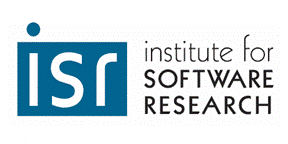
Institute for Software Research
School of Computer Science, Carnegie Mellon University
Modeling User Behavior on Socio-Technical Systems:
Patterns and Anomalies
Hemank Lamba
December 2019
Ph.D. Thesis
Societal Computing
How can we model user behavior on social media platforms and social networking websites? How can we use such models to characterize behavior on social media and infer about human behavior and preferences at scale? Specifically, how can we describe users that indulge in posting about risk-taking behavior on social media or mobilize against a particular entity in a firestorm event on Twitter?
Online social network platforms (e.g. Facebook, Twitter, Snapchat, Yelp) provide means for users to express themselves, by posting content in the form of images and videos. These platforms allow users to not only interact with content (liking, commenting) but also to other users (social connections, chatting) and items (through ratings and reviews), thus providing rich data with huge potential for mining unexplored and useful patterns. The availability of such data opens up unique opportunities to understand and model nuances of how users interact with such socio-technical systems, while also contributing novel algorithms that can predict genuine user behavior and also detect malicious entities at such a large scale.
In this dissertation, we focus on two broad topics - (a) understanding user behavior on social media platforms and (b) detecting fraudulent activities on these platforms. For the first part, we concentrate on user behavior in two different settings - (i) individual user behavior, where we analyze behavior of actions taken at individual scale for example modeling how does individual's expertise in e-commerce systems (such as wine rating, movie rating) evolve over time? and how can that be used to recommend the next product? The second sub-part (ii) focusses on user-based phenomena, where multiple users are analyzed collectively to discover an interesting phenomena, for example what are the characteristics of communication pattern between users participating in a firestorm event. In the second setting, we tackle the problem of detecting fraudulent activities on social media platforms. We solve two related sub-themes in the problem area, in the first sub area, we characterize various fraudulent activities on social media platforms and propose anomaly detection models to identify fraudulent users and activities. For the next sub-area we propose models that are not only confined to social media platforms, but can also be extended to general settings. Overall, this thesis looks at two closely related problems i.e. modeling user behavior on social media platforms, and then using similarly generated models to detect abnormal and potentially fraudulent behavior.
pages
James D. Herbsleb, Director, Institute for Software Research
Jürgen Pfeffer (Co-Chair)
Christos Faloutsos (Co-Chair)
J. Zico Kolter
Ceren Budak (University of Michigan)
Martial Hebert, Dean, School of Computer Science
Return to:
SCS Technical Report Collection This page maintained by reports@cs.cmu.edu
School of Computer Science